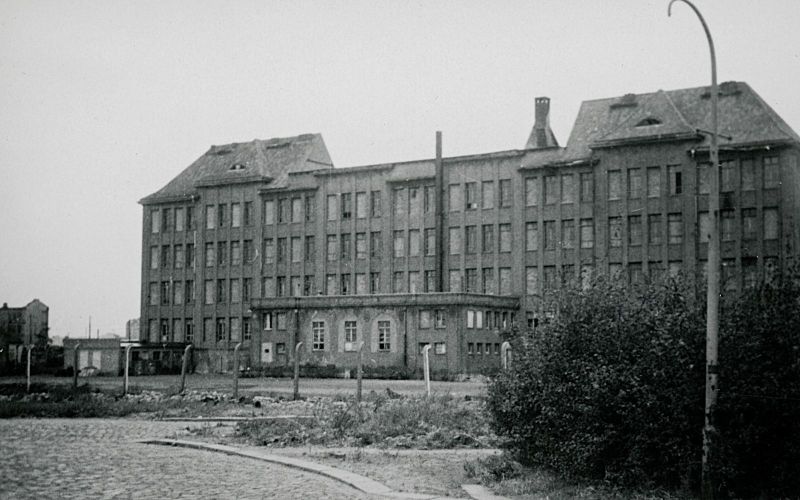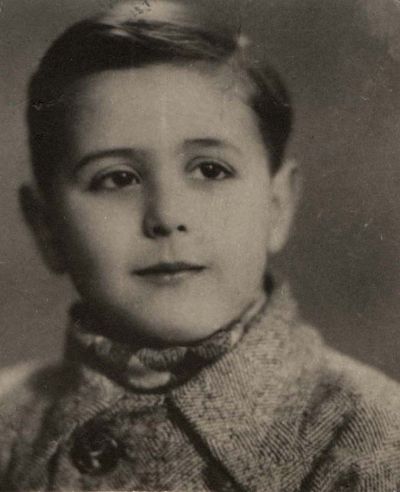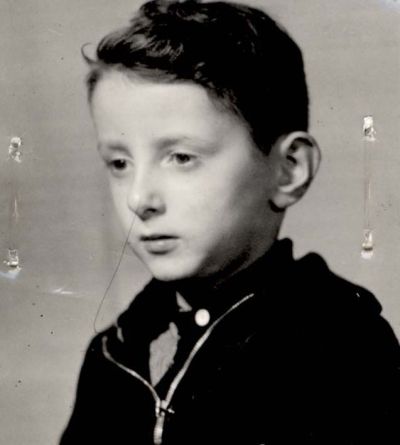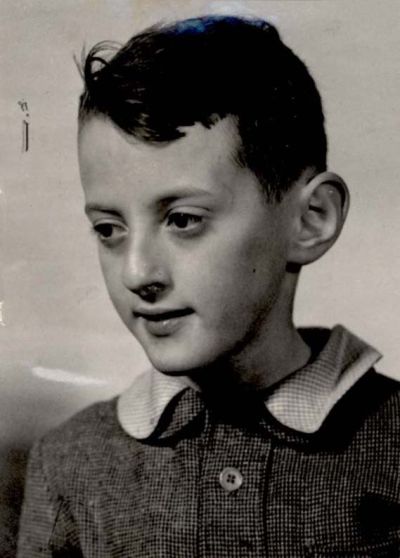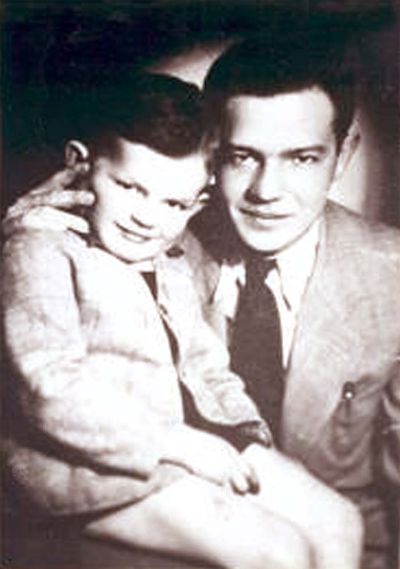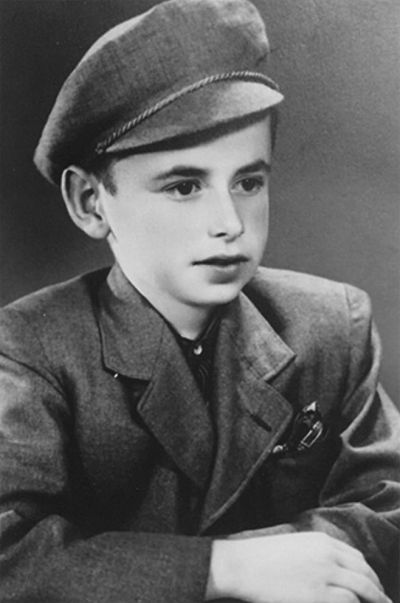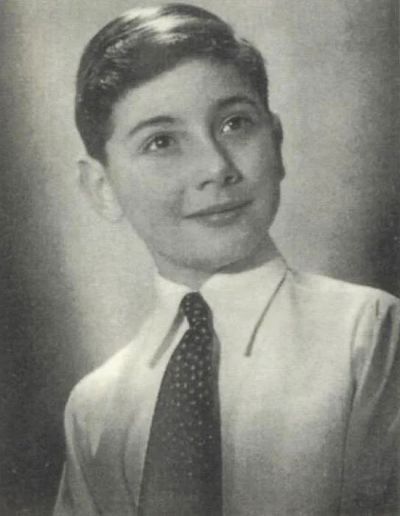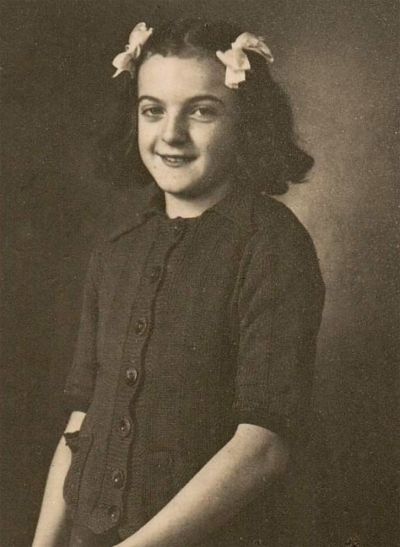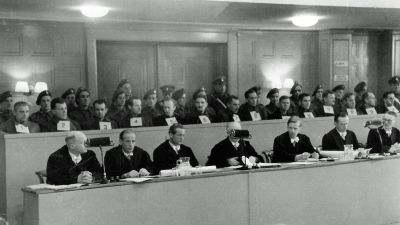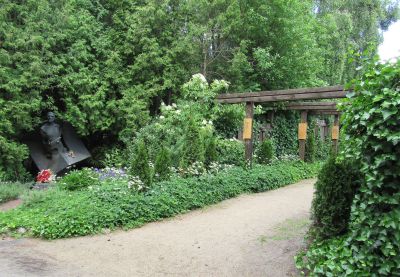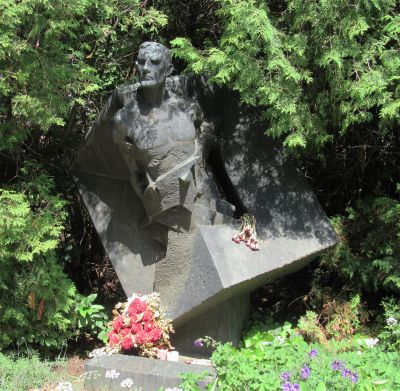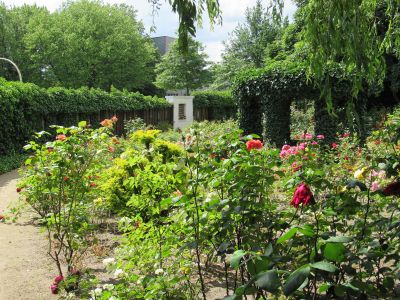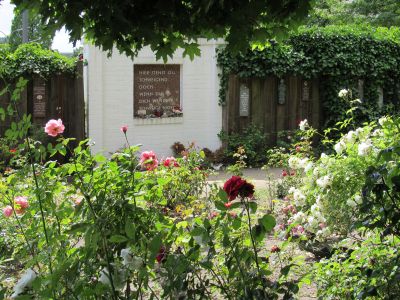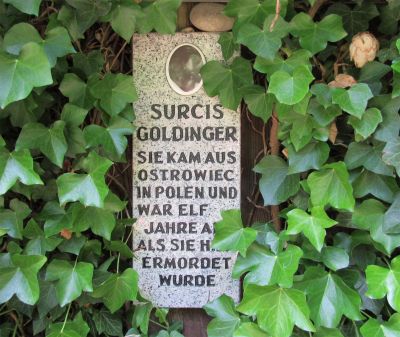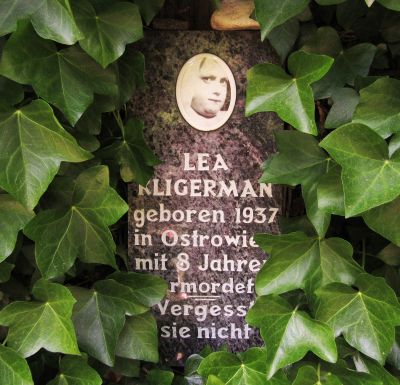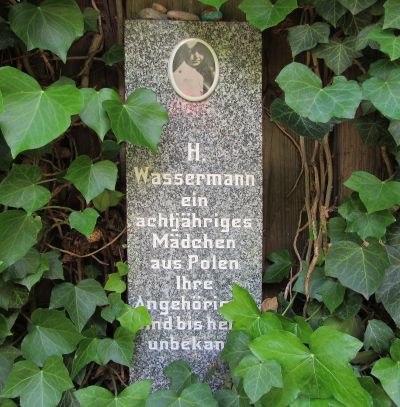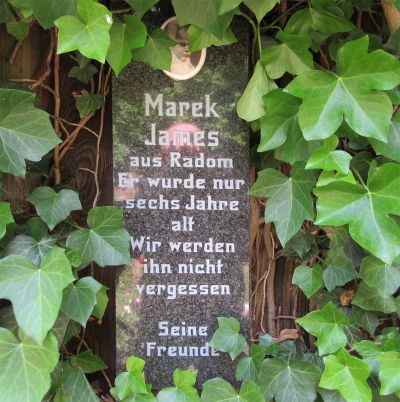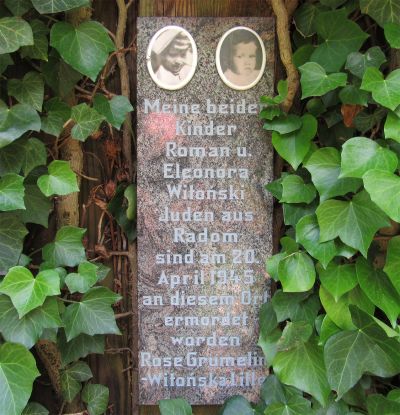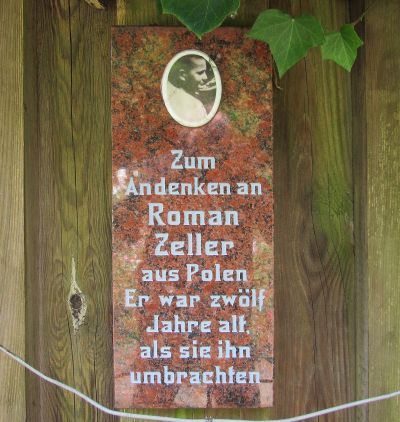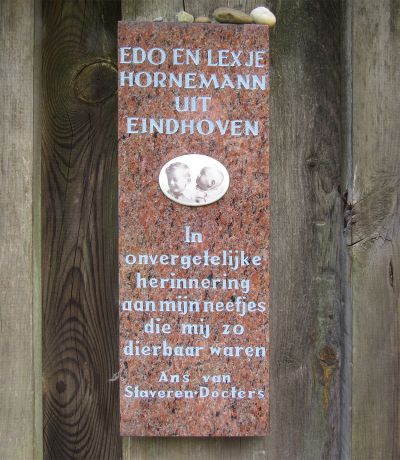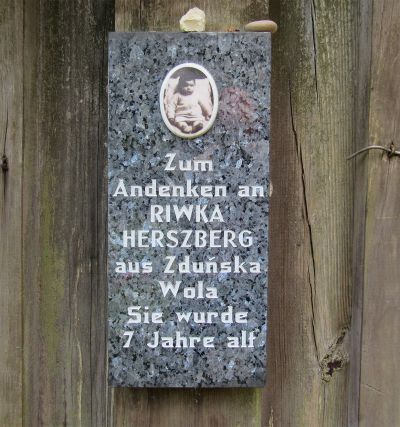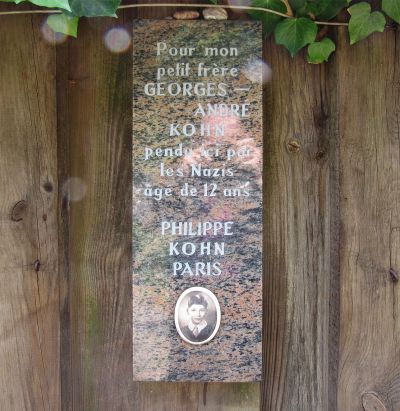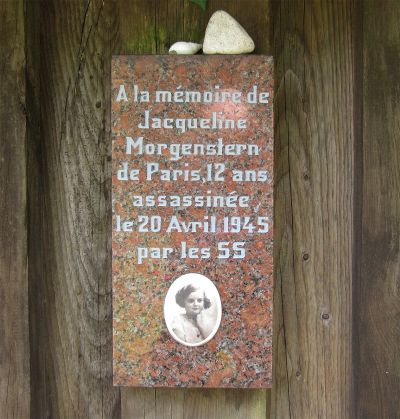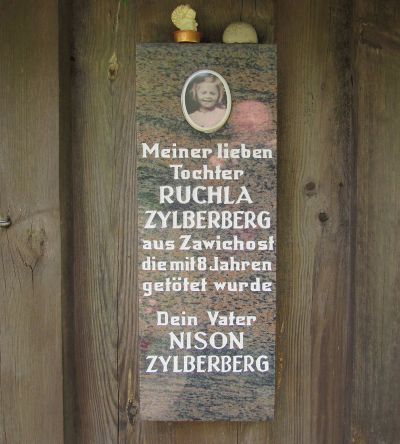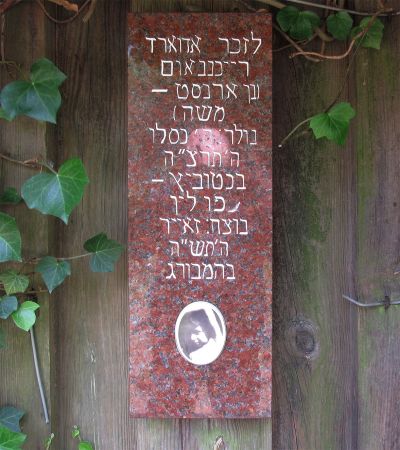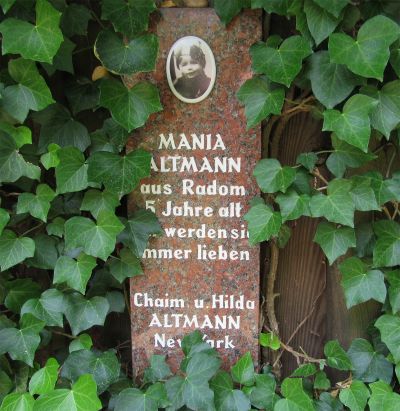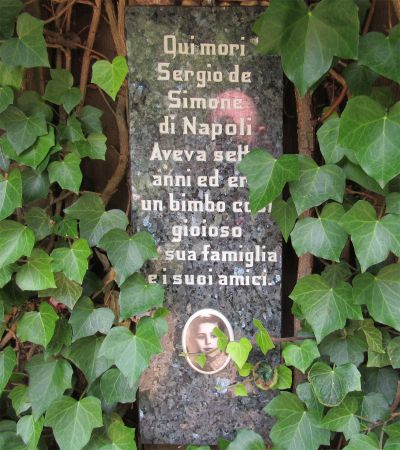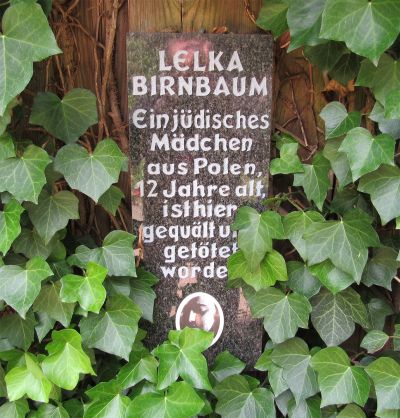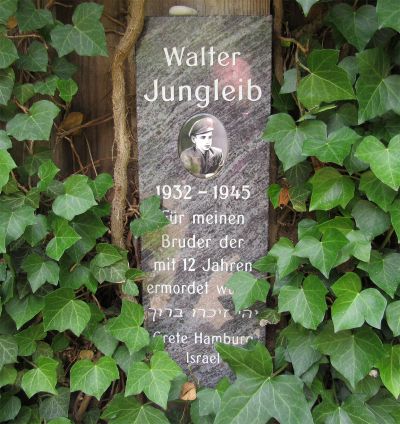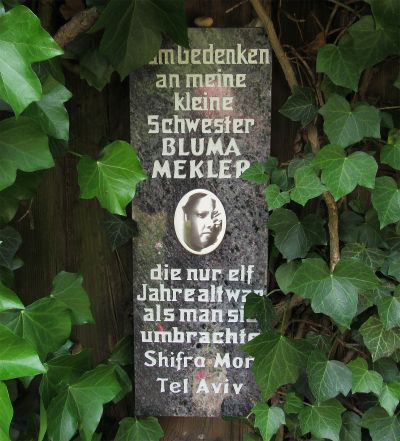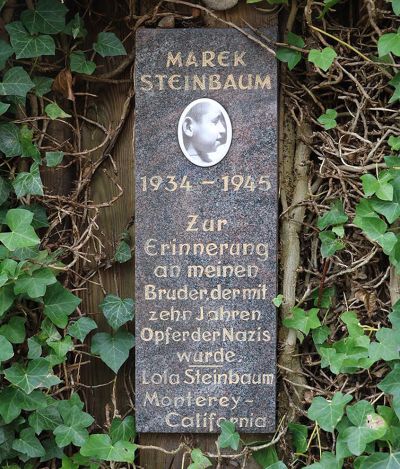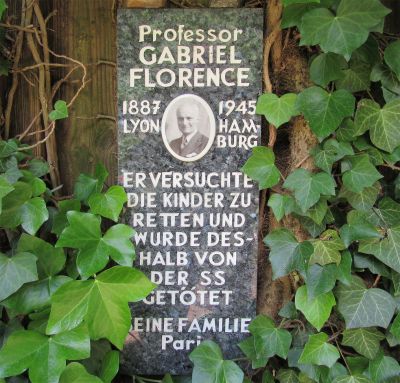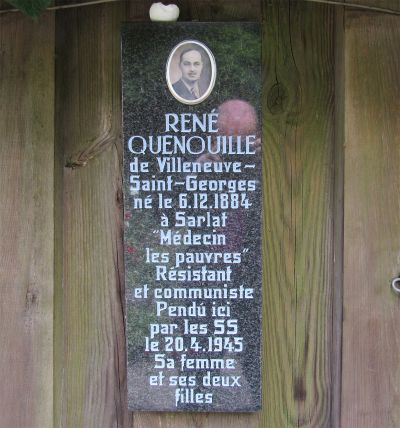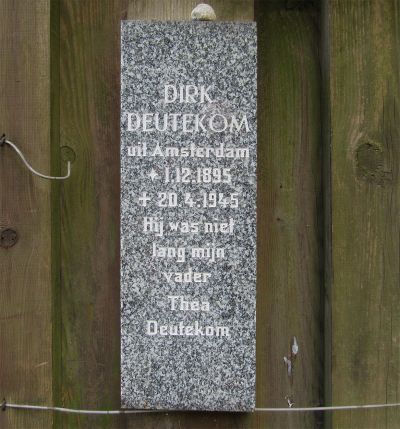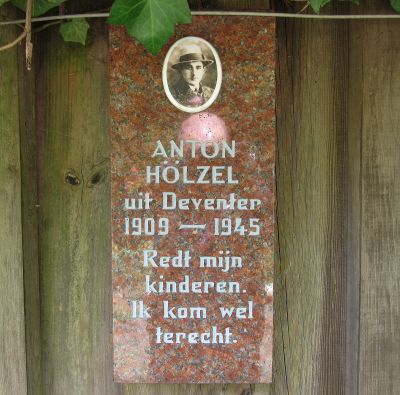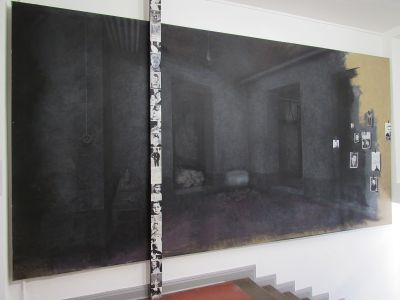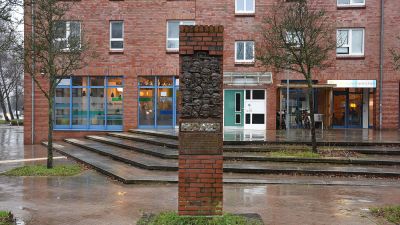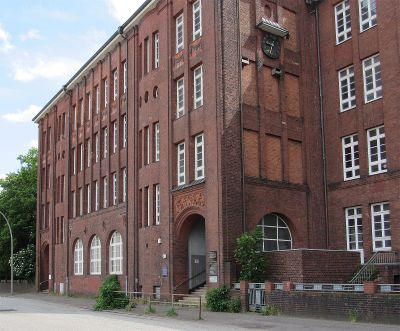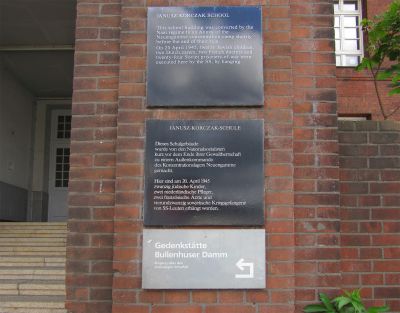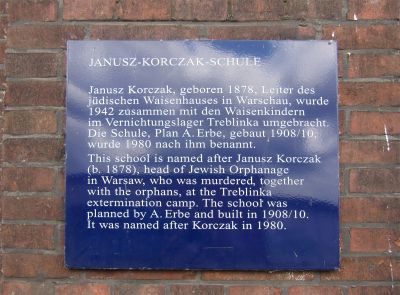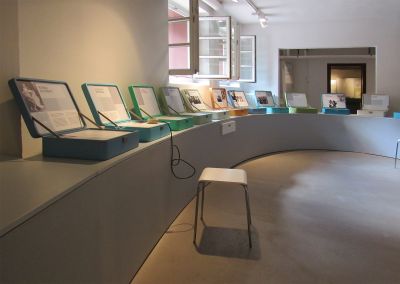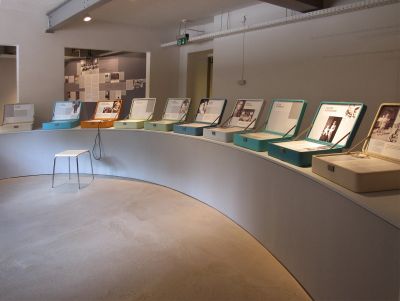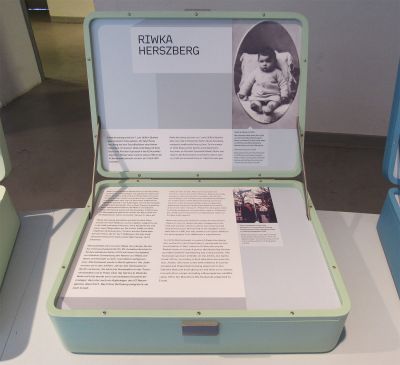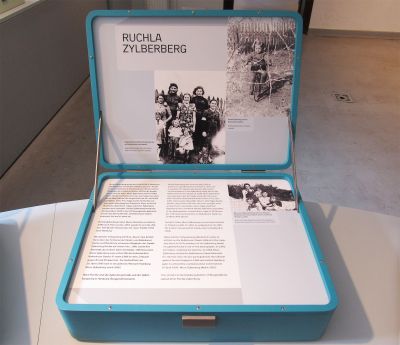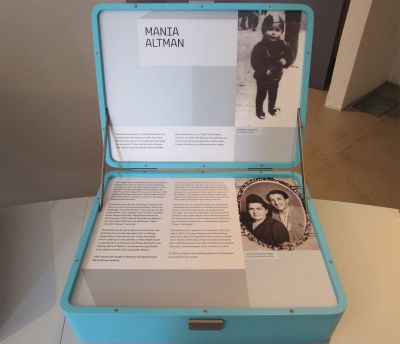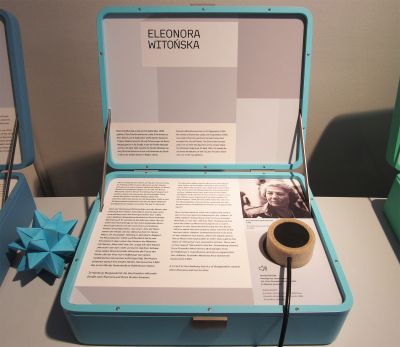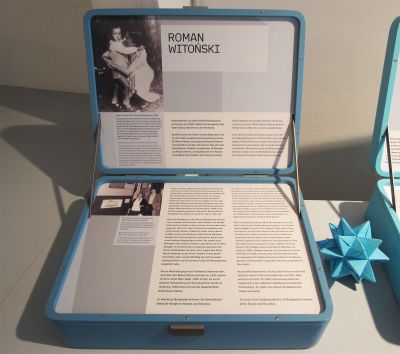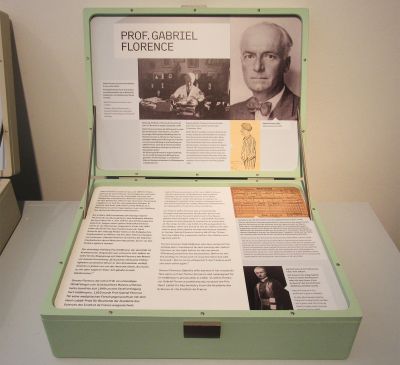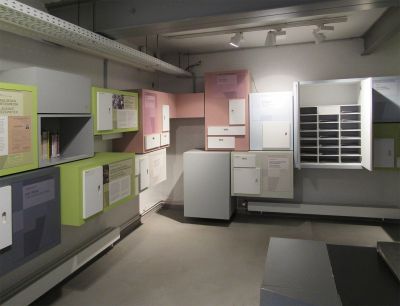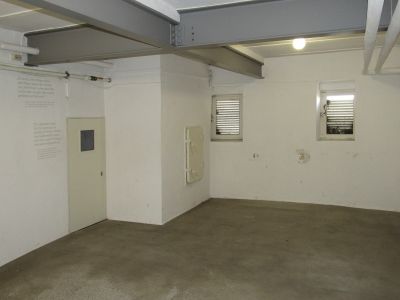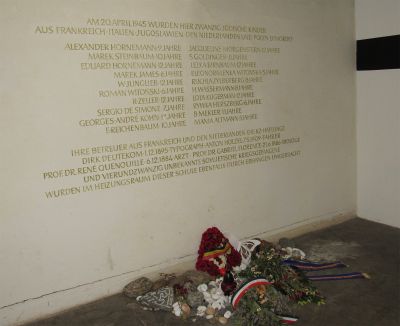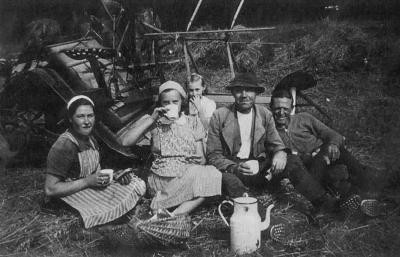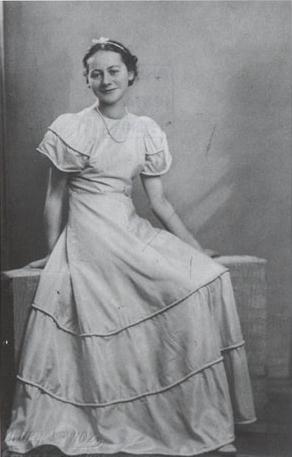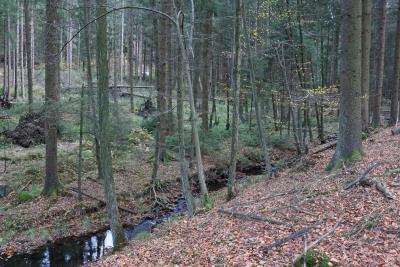The children of Bullenhuser Damm
Mediathek Sorted

The search for traces, documentation, remembrance. The erection of a memorial site
During the years that followed the Curiohaus trials, the memory of the murders at Bullenhuser Damm began to fade among the wider general public. In August 1948, the building was re-opened as a school. From the late 1950s onwards, former prisoners of the Neuengamme concentration camp regularly gathered at the school building to remember the events that took place there. In 1963, after many years of lobbying, the Hamburg Senate agreed to mount a memorial plaque dedicated to the murdered children and their four carers. No mention was made on the plaque of the Soviet prisoners who were executed there, however. In 1977, a journalist, Günther Schwarberg (1926–2008), drew attention to what had happened at Bullenhuser Damm. Schwarberg had first worked for the “Bremer Weserkurier” newspaper before moving on to “Radio Bremen” and a Düsseldorf-based agency for the Hamburg weekly magazine “Stern”.[40] After taking part in a memorial event in the cellar of the school, he began searching for traces of the murdered children. In Frankfurt/Main, in the archive of the Association of the Victims of the Nazi Regime (Vereinigung der Verfolgten des Naziregimes), he discovered photographs of all 20 children, which had been taken for Heißmeyer by an SS photographer. He used these photos on search posters, which he had printed in Polish, Italian, Serbo-Croat and German, as well as in French, Dutch and English, and which he sent to different countries in the hope of finding the children’s relatives.[41]
The first person to contact Schwarberg was a civil servant at the state attorney’s office in Tel Aviv, who had recognised her cousin Riwka Herszberg from Zduńska Wola in Poland on one of the posters. According to Schwarberg,[42] one researcher found the Kohn and Morgenstern families in Paris. At a meeting in the Paris office of the attorney Serge Klarsfeld, the businessman Philippe Kohn recognised his brother Georges on one of the photographs. Dorothéa Morgenstern found her niece Jacqueline among the faces shown.[43] In the Netherlands, relatives were found of the murdered nurses Hölzel and Deutekom. From March 1979 onwards, Schwarberg published a six-part series in the “Stern” magazine entitled “The SS Doctor and the Children” (Der SS-Arzt und die Kinder), which described the full sequence of events from the deportation of the Kohn family in Paris in August 1944 through to the trial of Heißmeyer and the failed attempts to indict Strippel. In addition to conducting his own research, Schwarberg had access to the list published by Dr. Henry Meyer in Denmark, a brochure published in 1978 by the former prisoner at Neuengamme concentration camp, Fritz Bringmann, entitled “The Murder of the Children at Bullenhuser Damm” (Kindermord am Bullenhuser Damm), as well as the documents and results of the trial against Heißmeyer in the GDR. The series ended with a report of his latest contact with Michael Zylberberg, a 16-year-old living in Hamburg whose parents had recognised their niece Ruchla from Zawichost in Poland among the photographs published in “Stern”[44].
On 20 April 1979, over 2,000 people gathered for a memorial event to mark the 34th anniversary of the death of the victims of Bullenhuser Damm. Philippe Kohn and Dorothéa’s son, Henri Morgenstern, came from Paris, while the Zylberberg family from Hamburg also attended the event, as did the widow of Anton Hölzel, who travelled from the Netherlands. Together with former inmates of the Neuengamme concentration camp and members of the public living in Hamburg, they founded the Children of Bullenhuser Damm Association (Vereinigung Kinder vom Bullenhuser Damm e.V.) and submitted a formal request for a new criminal investigation against Strippel. In 1980, the association formally opened a memorial site in the cellar rooms of the school with a small exhibition. In a formal ceremony in April of the same year, the Hamburg Senate renamed the school the Janusz-Korczak School (Janusz-Korczak-Schule) (Fig. 37–39) in honour of the Polish doctor and educationalist Janusz Korczak, who in 1942 had voluntarily accompanied the Jewish children from an orphanage who were in his care to Treblinka concentration camp, and who went with them to his and their death.[45]
[40] Schwarberg: Kinder 1996 (see Bibliography), page 135 f., names his first sources as being the book by Edward Lord Russell of Liverpool, a brigadier responsible for the military courts of the British Army after 1945: Geißel der Menschheit. Kurze Geschichte der Nazikriegsverbrechen, Berlin 1960, (original English title: The Scourge of the Swastika: a Short History of Nazi War Crimes, 1954) and the book published in the same year by the GDR writer Willi Bredel: Unter Türmen und Masten. Geschichte einer Stadt in Geschichte, Schwerin 1960
[41] Reproduction of the poster in the file “Günther Schwarbergs Spurensuche”, http://media.offenes-archiv.de/10mal_gruen_Plakat_28.03.11_klein.pdf
[42] Schwarberg: Kinder 1996 (see Bibliography), page 137
[43] On the families of the murdered children, see also: http://www.kinder-vom-bullenhuser-damm.de/die_angehoerigen.php
[44] Reproductions of the “Stern” article by Günther Schwarberg in the “Stern” series file: “Der SS-Arzt und die Kinder”, at: http://media.offenes-archiv.de/04_gruen_SternSerie_31.03.11_klein.pdf
[45] Am Gedenktag: “Der muss viel durchlitten haben”. Janusz Korczak gab der Schule seinen Namen, in: Hamburger Abendblatt, 21. April 1980, shown in copy in the file Dokumente und Fotos, at: http://media.offenes-archiv.de/05_gruen_DokumenteFotos_30.06.11_nachkorrektur.pdf

















































































